As cities around the world encourage citizens to stay home to flatten the curve of Coronavirus (COVID-19), consumer habits are changing.
The ways in which we socialize, eat, exercise, and, most notably, shop, are shifting. To better understand how consumer behavior and commerce have changed, we fielded a survey to shed light on how shopping habits and priorities are evolving.
On March 17th, 2020, we polled 2000 consumers between the ages of 14-73. 34% of respondents live in the US, 34% in the UK, and 33% in Canada. The respondents were evenly split between Gen Z (14-22), Millennials (23-38), Gen X (39-54), and Baby Boomers (55-74).
Among many emerging trends, here a few key takeaways for eCommerce marketers:
- Shopping behavior is beginning to evolve, with consumers more responsive to marketing messages, including email, SMS marketing, social, and more.
- Consumers prioritize buying food first and foremost, but also products that promote health and wellness, including supplements, superfoods, and items like thermometers and medication.
- If products are out of stock in stores, consumers will consider less familiar brands.
Shopping behavior is beginning to evolve
Consumers are starting to pay more attention to marketing messages, including email, SMS, social ads, and more (35.65%). They’re also browsing online more (32.05%), and buying online more (25.35%).
If the disruption continues, nearly half (43.20%) plan to do more of their shopping online.
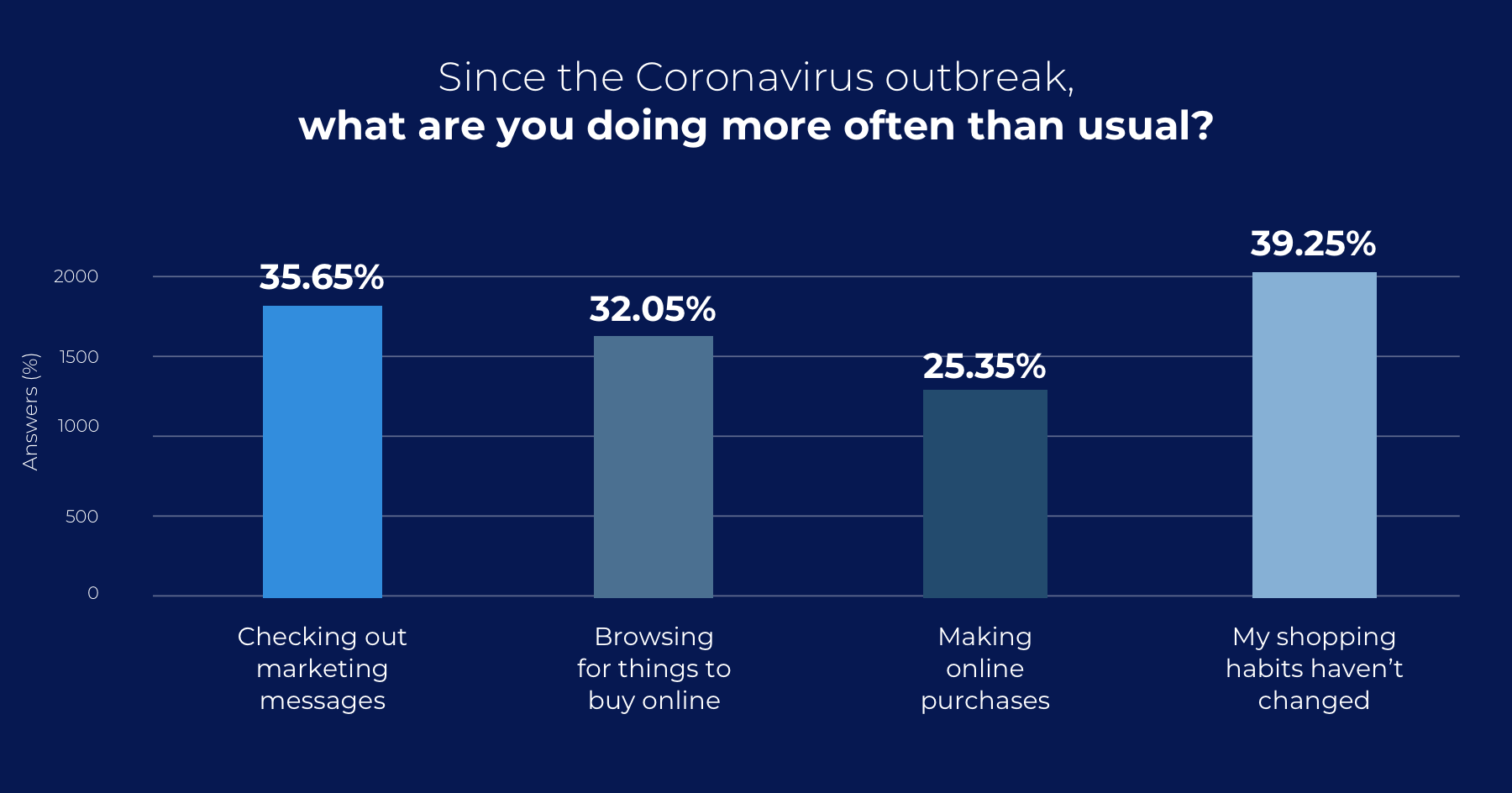
Consumers are looking to spend less (56.75%) rather than spend more (23.65%) during this time, or they’re aiming to maintain their typical spend (22.80%). Almost a third (31.7%) are shifting to buying online more than in physical stores.
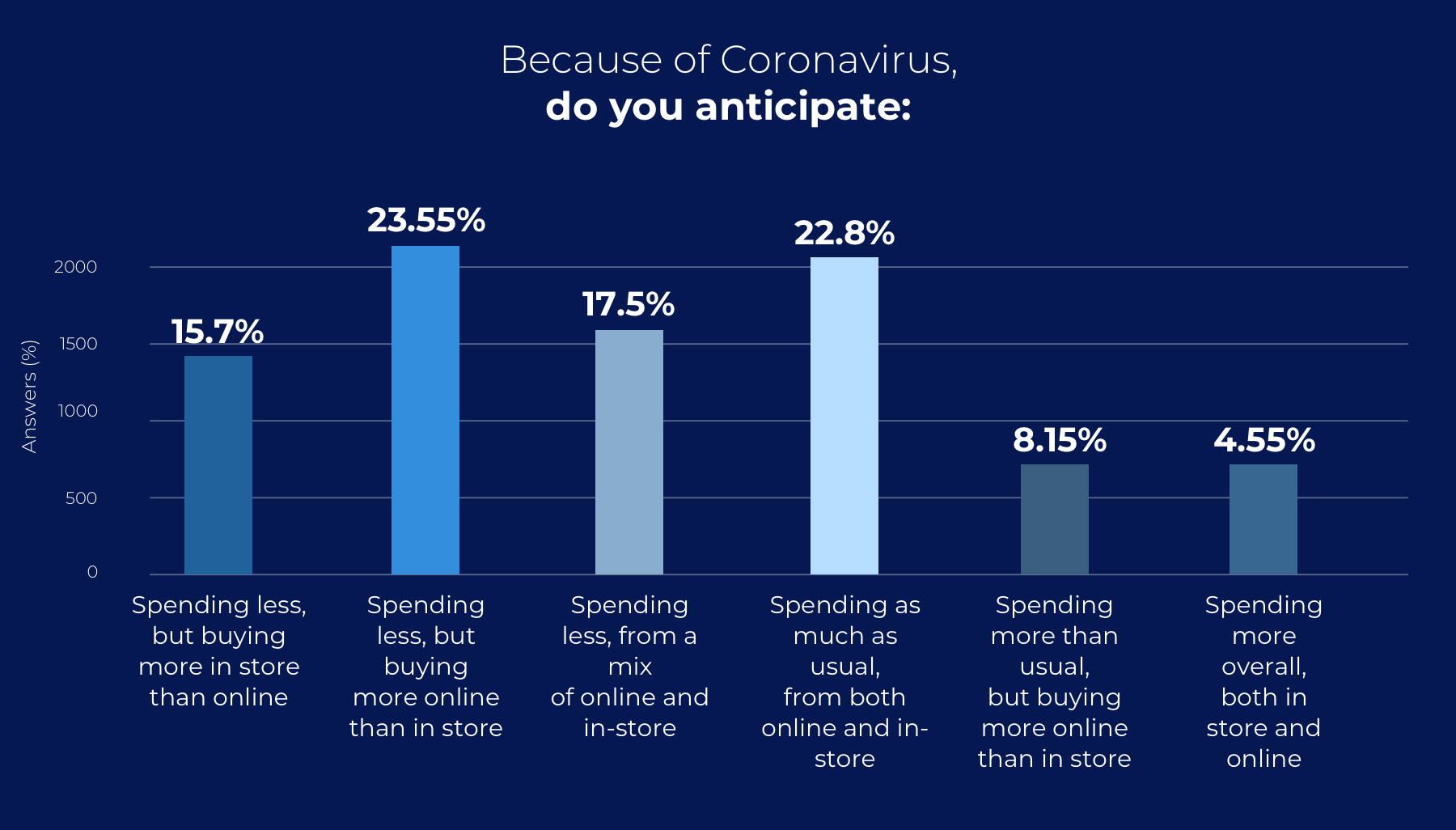
Survival essentials are top of mind for consumers
Among product categories, Food (78.8%) is the main priority on shopping lists: specifically non-perishable foods like canned goods (46.05%). As consumers spend more time inside, they also plan to cook more often (50.95%).
Health & Wellness products are also top-of-mind (42.50%), with consumers reporting buying more personal sanitizers (40.15%), medical care items like thermometers (22.75%), and wellness items like vitamins, CBD, and superfoods (21.60%).
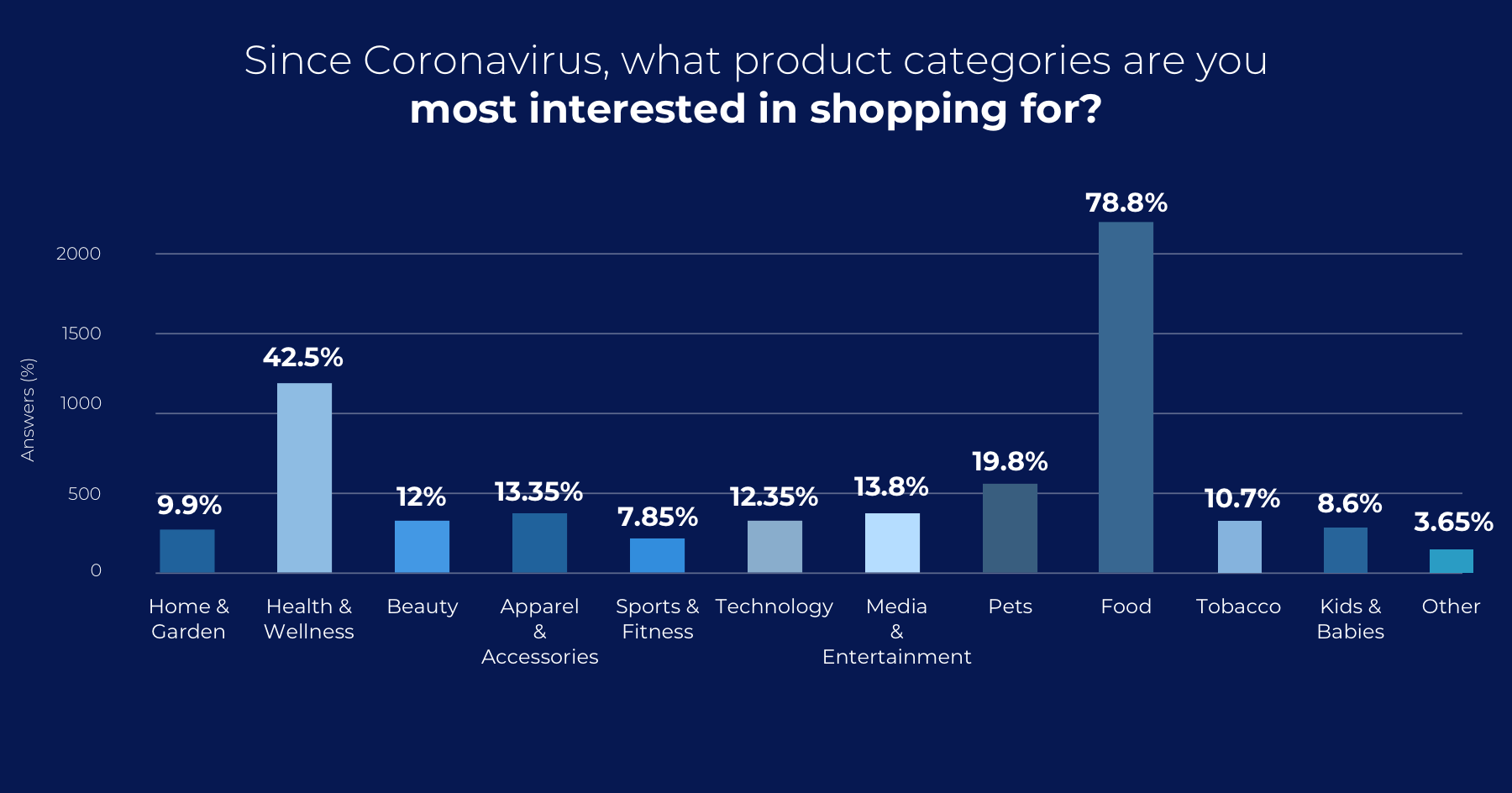
Consumers are also buying more household cleaning supplies (34.95%) and toilet paper (30.85%). Respondents also wrote that they’re looking to buy water, camping gear, frozen food, beer, and liquor.
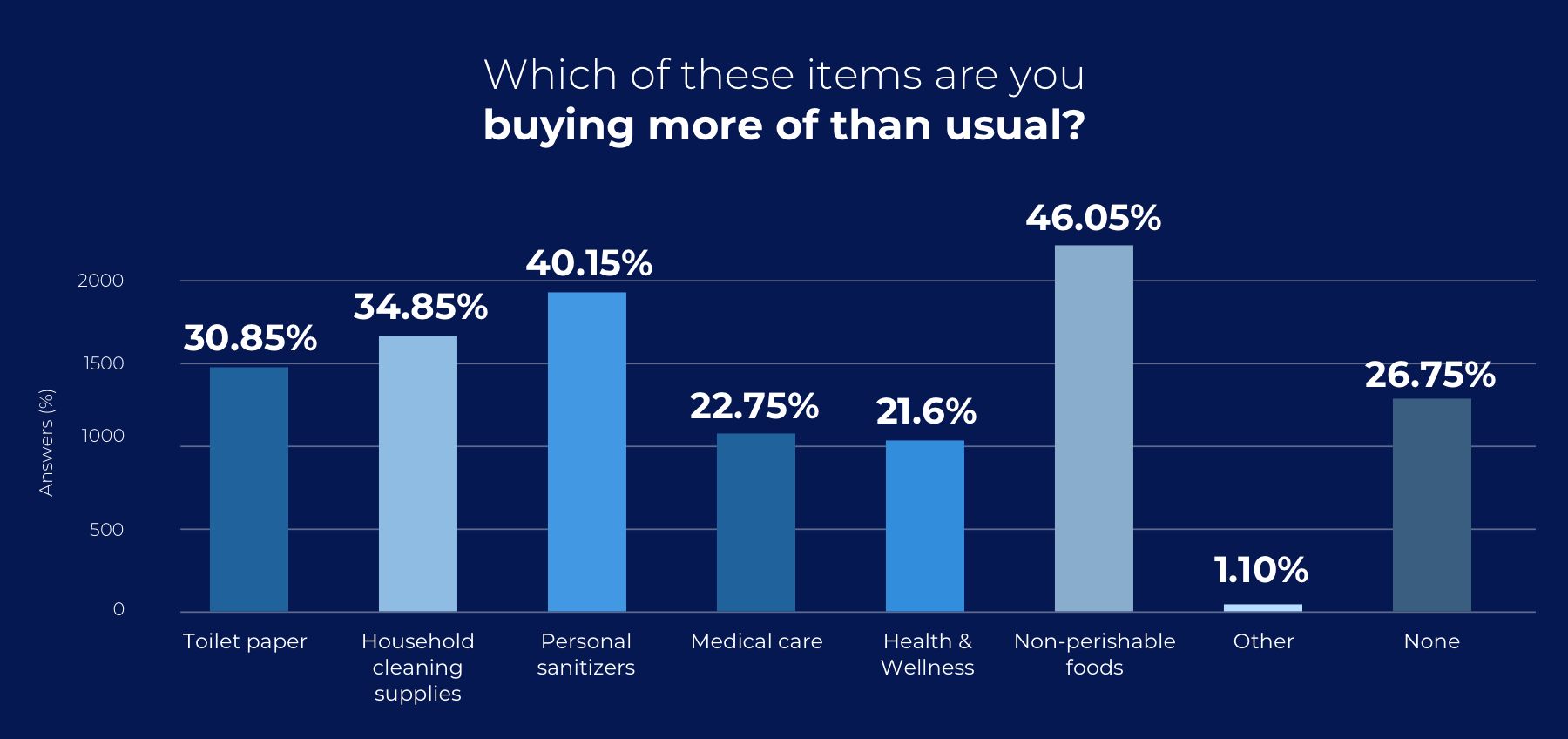
Consumers care about availability
If products are unavailable, many consumers said they would turn to less familiar brands as options (40.55%). Some said they’d wait until the store restocks their preferred brands (33.85%), or that they’d try other stores (28.75%) to find them. Others choose to sign up for product restocking updates (17.50%).
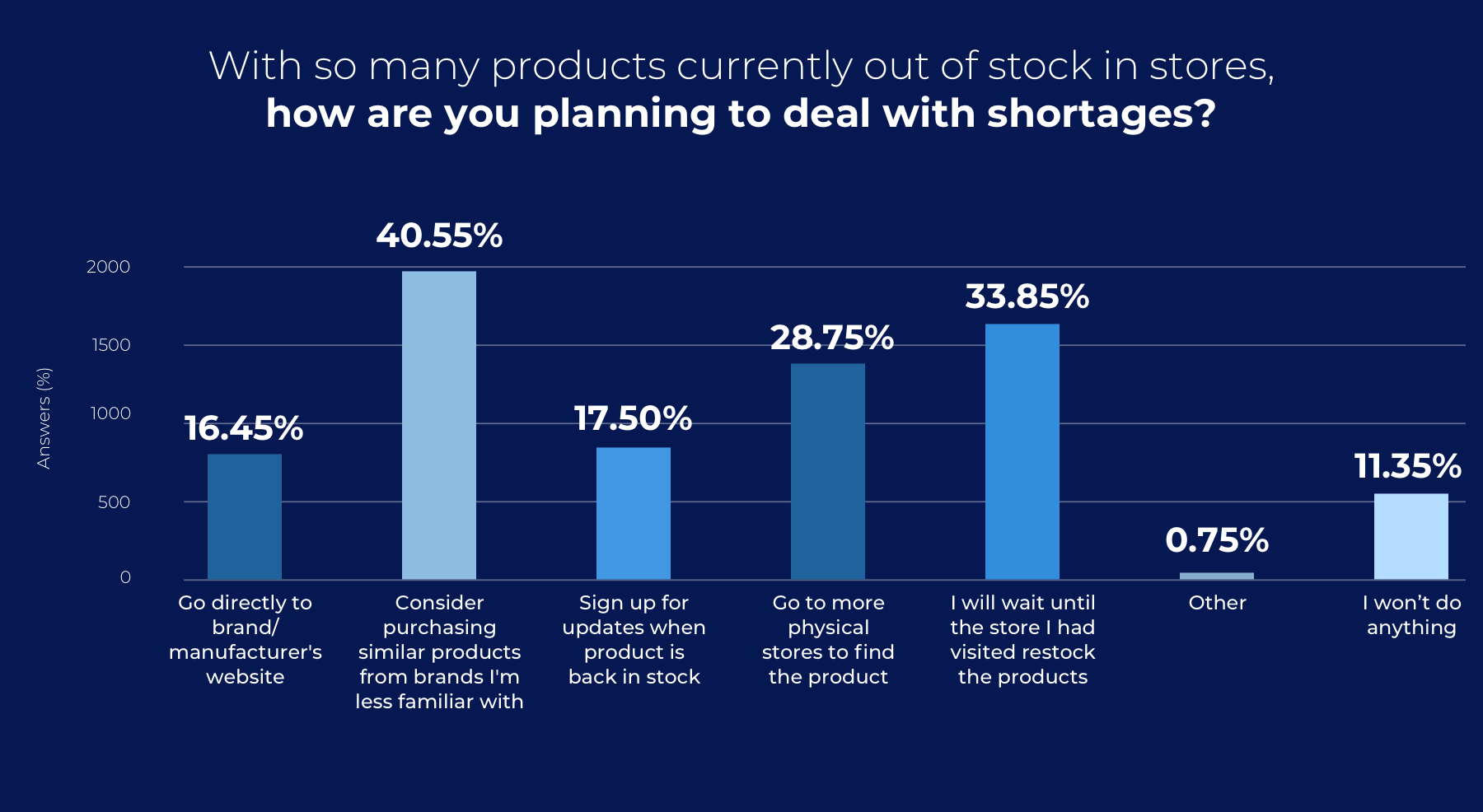
What do these trends mean for your brand?
More than ever, it’s essential to connect with your customers on a basic human level. Be sympathetic to their anxieties and concerns, and offer value in ways beyond just your products. Here are three strategies to keep in mind during this time:
Invest in the right kind of marketing
Especially now, it’s essential to focus on creating content that provides real value to consumers. From entertaining videos, to informative blog posts, to open channels of communication that makes your brand and team more accessible, like Slack channels, Instagram Live, and SMS marketing, it’s now more important than ever to deepen your relationship with your community.
Optimize your customers’ on-site experience
Now more than ever, your website is the primary channel for your brand. Leverage the power of user-generated content and consumer feedback to build trust in these times; having a steady stream of new and authentic reviews will be especially critical to shoppers.
Create a sense of community around your brand by encouraging your customers to share their visual content during this time. Incentivize your customers to leave new reviews showcasing how they use your product at home, then feature their content in a dedicated widget or gallery on your site. Or, send SMS messages to loyalty members directing them to their favorite products with a special, time-sensitive offer. For more strategies to connect with your customers, check out our Inspiration Gallery.
With more consumers shopping online, and paying more attention to marketing messages, your brand should look to create personalized on-site experiences that keep shoppers coming back.
Amplify your brand community
Think of your brand from the perspective of your customers during this time — as people, we’re all going through this unprecedented global experience together.
Right now, people care about food, and they plan to cook more often — if it feels authentic, maybe your team can share favorite recipes or cooking videos. Or, because people care about working productively from home, your brand can offer productivity hacks, healthy snack ideas, or makeup tips to look your best in video calls. People are investing in their health and wellbeing, so maybe you can share your list of most trusted supplements and offer a free mid-day meditation lesson. More than anything, allow your brand to be human — we’re all in this together.
In times like these, it’s the connections we have with the people around us, from near and far, that keep us grounded. For your brand, your community is the tie that binds, and it’s important that you keep customer experience top of mind, not just during this difficult time, but all the time.
Want to learn more?
For more findings from this survey, check out our report: COVID-19: Consumer Trends By Generation and Geography.
We’ll keep more customer engagement strategies coming, so stay tuned. In the meantime, here are 15 strategies to engage your customers during the time of COVID-19. For more information on Yotpo’s efforts around business continuity, see a note from our CEO & Co-Founder, Tomer Tagrin, here.




